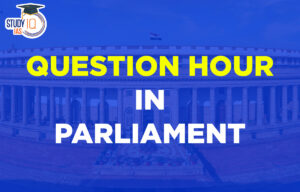Table of Contents
The Delimitation Commission, also known as the Boundary Commission of India, was established by the Indian government in accordance with the guidelines given by the Delimitation Commissions Act. This commission, which the President of India specifically established, collaborates with the Election Commission of India to uphold the fictitious boundaries of Lok Sabha seats and local legislatures around the nation based on the most recent census. Due to the increasing number of Assembly seats, the Delimitation Commission has filed its report for J&K delimitation.
Delimitation Meaning
Delimitation is the process of setting the boundaries for electoral constituencies in a country or region. In India, this task is managed by a special authority called the Delimitation Commission. There have been four Delimitation Commissions in India: in 1952, 1963, 1973, and 2002. The Commission has strong authority, and its decisions are legally binding and cannot be challenged in court. The President of India determines when these orders take effect. While copies of the orders are shared with the House of the People and state assemblies, they cannot change them.
History
India has set up Delimitation Commissions four times: in 1952, 1962, 1972, and 2002, according to their respective acts. In 1976, the government paused the delimitation process until after the 2001 census to avoid political influence from states’ family planning programs. This led to large differences in constituency sizes, with some having over three million voters and others fewer than 50,000.
Also Read: Uniform Civil Code
Delimitation Commission Act
Delimitation must follow specific steps to work effectively. According to Article 82, Parliament must pass a Delimitation Act after each census. Article 170 states that states are also divided into constituencies after each census. Once the Act is passed, the Central Government sets up a Delimitation Commission. This Commission then issues delimitation policies as needed.
Composition
The Delimitation Commission is a powerful body responsible for setting constituency boundaries. It includes
- a chairman,
- the Chief Election Commissioner or one of the two election commissioners, and
- the state election commissioner.
Also, there are five MPs and five MLAs from the state as associate members since the commission operates temporarily and has no full-time staff. Election Commission workers handle the detailed process, which can take up to five years. New boundaries are drawn using census data from districts, tehsils, and gram panchayats. The commission’s orders are legally binding and cannot be challenged in court or changed by Parliament.
Delimitation Commission Objectives
The Delimitation Commission of India’s primary objective is to define the boundaries or limits of state legislatures and Lok Sabha constituencies to reflect demographic fluctuations. The most current census serves as the basis for redrawing boundaries each year. For instance, the current Lok Sabha constituency delineation is based on the 2001 census. This constituency delineation aids in distributing the number of Lok Sabha seats to the various Indian states as well as those of each state’s legislative legislatures. The Delimitation Commission’s poll results could influence the seats.
Constitutional Basis for the Delimitation Commission
After each census, Parliament must pass a Delimitation Act under Article 82. According to Article 170, states are divided into constituencies based on this Act. The Union government then sets up a Delimitation Commission when the Act takes effect. The first delimitation exercise was conducted by the President with the Election Commission in 1950-51, and the Delimitation Commission Act was adopted in 1952.
How Delimitation Works
The delimitation process is bureaucratic. Every ten years, after a census, Parliament enacts a Delimitation Act. The Union government then appoints a Delimitation Commission, chaired by a former Supreme Court judge. The commission analyzes demographic data, current constituencies, and the number of seats, and meets with stakeholders to make recommendations.
After reviewing feedback, the commission finalizes its report, which is published in the Indian Gazette and state gazettes. The commission’s final order takes effect when communicated to the President and serves as the basis for future elections until the next delimitation. The draft report is also published in the Gazette of India and state gazettes, along with notices in at least two local newspapers to gather public comments.
Delimitation Commission Functions
- Determine the number and boundaries of constituencies to ensure equal population distribution.
- The Delimitation Commission modifies representation based on the latest census for the House of People and state Legislative Assemblies.
- The Commission decides on seats for Scheduled Castes and Scheduled Tribes in areas with significant populations (Articles 330 and 332)
- If there are disagreements among Commission members, the majority opinion is followed.
- Draft recommendations are shared via the Indian Gazette, state gazettes, and local media.
- The Commission holds forums for the public to give feedback, both orally and in writing.
- The draft proposal may be modified based on public feedback.
- Once the President sets a date, the final order is published in the gazettes and becomes effective on that date.
Delimitation Commission for Jammu and Kashmir
- The former J&K state had 111 seats, with 46 in Kashmir, 37 in Jammu, and 4 in Ladakh, plus 24 seats set aside for Pakistan-occupied Kashmir.
- This led to the creation of the Delimitation Commission 2020 for J&K.
- The J&K Delimitation Commission recommended a number of adjustments; however, the Union Government only endorsed the following.
- The J&K Delimitation Commission’s recommendations were accepted by the Union Government via an official announcement.
- The Jammu & Kashmir region was viewed by the Delimitation Commission as a single Union Territory.
- There are now seven seats in the parliamentary assembly.
- One in Kashmir (43 seats) and six in Jammu (currently with 47 seats).
- 9 seats have been set aside for ST candidates and 7 seats for SC candidates.
- The treatment is as of Jammu and Kashmir as a single entity and the elimination of regional distinctions.
- This was accomplished by creating the Anantnag-Rajouri parliamentary district by joining the Kashmiri area of Anantnag with the Jammu regions of Rajouri and Poonch. The Pandit community in Kashmir is eligible for two seats.
- The Delimitation Commission J&K reserved 24 seats for Pakistan’s occupied portion of Jammu and Kashmir.
Also Read: Parliamentary Form of Government
Delimitation Commission in the North Eastern States
Under the Delimitation Act of 2002, a delimitation process was planned for Assam, Arunachal Pradesh, Manipur, and Nagaland in 2020. This process had been on hold for 12 years because, in 2008, the situation in these states was considered unsafe due to significant threats to peace and public order. However, recent reports indicate that the government has reduced its plans for delimitation in the North Eastern regions.
Delimitation Commission Problems
States that do not focus on managing their populations may end up with more members in Parliament. In contrast, southern states that promoted family planning could risk losing some of their seats. Even in 2008, when the delimitation was based on the census of 2001, the overall number of seats in the Parliament and the Legislative Assembly that was determined as per the 1971 census did not change. The Constitution limits the Lok Sabha to a maximum of 550 seats and the Rajya Sabha to 250 seats, meaning that one lawmaker represents larger populations. This could lead to states that prioritize population control having more MPs.
Delimitation Commission UPSC
The Indian government established the Delimitation Commission of India, commonly referred to as the Boundary Commission of India, in accordance with the Delimitation Commission Act. The commission’s main duty is to redraw the boundaries of each assembly and Lok Sabha seat in light of a recent census. Although it was anticipated that the limit on the number of Lok Sabha and Assemblies seats would be repealed after the 2001 Census, an amendment delayed it until 2026. This was supported by the prediction that by 2026, the nation’s population growth rate will be uniform. Students can read all the details related to UPSC by visiting the official website of UPSC Online Coaching.


 Question Hour in Parliament: Meaning, Ty...
Question Hour in Parliament: Meaning, Ty...
 List of Governor of States in India, Con...
List of Governor of States in India, Con...
 Maharashtra Bill to Curb Urban Naxalism,...
Maharashtra Bill to Curb Urban Naxalism,...





















